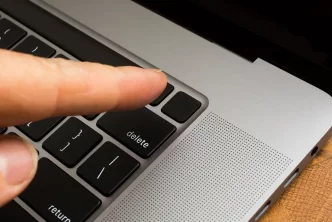Having a Fire Suppression System installed in your building is one of the most effective ways to cope with a fire crisis. These systems primarily consist of both fire detection and fire protection equipment that assist in dealing with both the pre-and post-fire repercussions of a fire. There are many different types of Novec1230 fire suppression systems, and you can use one or a combination of them to keep your business and employees safe in the event of a fire. These systems include the following:
1. Fire Alarms:
Highly reliable devices that sound an alert in the event of a fire. They even employ cutting-edge technologies to detect flames. An alarm sounds as soon as a fire is detected by the built-in (or, in some circumstances, separate) fire detector, indicating that the building should be evacuated.
2. Gaseous Suppression Systems:
These systems provide a wide range of tools for putting out a fire. Chemical suppression systems and inert gas suppression systems are the two primary kinds.
Chemical Fire Suppression: They primarily utilize chemical agents like FM200 and NOVEC 1230 to put out fires. These chemicals put out a fire by absorbing heat, lowering the temperature to the point where the flame can no longer live, and effectively putting out the fire. In most regions and circumstances, this form of suppression is safe to utilize.
3. Water Sprinkler Systems:
Also known as Water Mist Systems, these systems can be employed in places where gas suppression systems aren’t suitable. Water Mist Systems are divided into two categories:
- High-Pressure Water Mist Systems (HPWM): These systems use high-pressure pumps, storage tanks, and pressurized nitrogen cylinders to discharge water through small bore pipework and high-pressure discharge nozzles. They consume very little water, but they are more expensive.
- Low-Pressure Water Mist Systems (LPWM): LPWM systems use more water at a lower pressure than HPWM systems and are made up of pumps and storage tanks. For this type of fire suppression system, copper or specialty pipework can be employed.
4. Emergency Lighting Systems:
These are strong emergency lights that can be placed throughout the facility. They are commonly used to point to emergency exits for assistance in the event of an evacuation and to allow for a quick getaway. Emergency lights are also utilized in elevators and other places where a fire should be prevented.
Some systems require little cleanup (clean agent vapors) and systems that require a cleaning staff and several days of elbow grease. This results in server downtime, as you could expect. In the event of even the smallest fire, some systems can have you twiddling your thumbs until you’re back in business, ranging from little to severe. The next step is to re-charge your fire suppression system, which will take some time and money.
I’m hoping to make things easier for you here. For many years, I have provided automatic co2 fire suppression advice to businesses. This firsthand experience selling fire suppression system solutions for a variety of room and enclosure sizes has demonstrated to many businesses the advantages of employing modern technology when it comes to protecting critical assets.
Then I’ll go over some aspects to think about before deciding on fire suppression equipment and a fire suppression firm.
To begin, learn about the different types of fires that could occur. The National Fire Protection Association divides fires into four categories based on the materials or fuel used to start them:
- Fires involving flammable liquids, oils, greases, tars, oil-based paints, lacquers, and flammable gases
- Fires involving electrical equipment are classified
- Fires are those that use ignitable metals as a fuel source.
- A combination of Types A, B, and C can be found in a typical server room fire. All three forms of fires will be rated by an effective fire suppression system.
- The source of a server room fire is frequently not discovered until the fire has been extinguished. As a result, putting in a system that can handle A, B, and C Types is a good way to avoid a disaster.
Final Thought
These are the fundamentals of a good fire suppression system. Suppression systems are normally governed by the NFPA codes, and they can be utilized in most places as long as they obey the rules. They have now become a need in various businesses, as they aid in the detection of fires, the management of damage and loss of equipment, and the saving of human lives.





